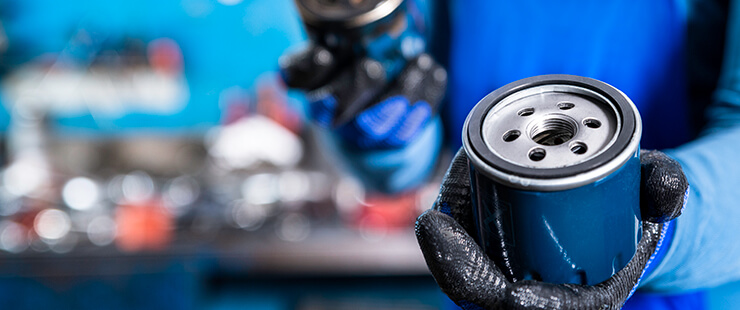Get unique, complex parts easily. No matter your requirements, Chaoyi Spring creates hard-to-produce coil springs and wire forms.
Let us help you create the custom wire form you need, from S-hooks and J-hooks to utility hooks and more.
We work closely with customers across a wide range of industries, helping them design and manufacture made-to-order parts.
Why choose Chaoyi Spring? We prioritize customer-focused collaboration, modern equipment and the latest technology to make your parts per print.
Find the information and guidance you need, from measuring a spring to learning about materials, placing an order and much more.
Coil springs, those ubiquitous helical wonders, are the unsung heroes of countless mechanical systems. They silently store and release energy, providing a reliable and often invisible force in everything from


Coil springs, those ubiquitous helical wonders, are the unsung heroes of countless mechanical systems. They silently store and release energy, providing a reliable and often invisible force in everything from car suspensions to door closers. One of their most fundamental functions is compression, where the spring is squeezed, storing potential energy that can be released later. This article delves into the world of coil spring compression, exploring its principles, applications, and the factors that govern its behavior.

Imagine a coil spring, like those found in a ballpoint pen or a toy car. When you push down on the spring, you're compressing it. This compression forces the coils closer together, storing energy within the spring's material. This stored energy is elastic potential energy, and it's what allows the spring to push back when you release the pressure.
The amount of force required to compress a spring is proportional to the amount of compression. This relationship is known as Hooke's Law, a fundamental principle in physics. Think of it like a rubber band: the harder you pull, the further it stretches. Similarly, the more you compress a coil spring, the greater the force it will exert when you release it. The spring constant, denoted by 'k', quantifies this relationship. It represents the force required to compress the spring by one unit of length. A spring with a higher spring constant is stiffer, meaning it takes more force to compress it a given distance.
Several factors play a crucial role in determining the compression characteristics of a coil spring. Let's explore a few key ones:
The diameter of the wire used to make the coil spring directly impacts its stiffness. Thicker wires lead to springs with higher spring constants. Think of it this way: a thicker wire has more material to resist compression, making it more difficult to deform.
The diameter of the coil itself also influences stiffness. Larger coil diameters generally lead to lower spring constants. Imagine two springs, one with a tight coil and the other with a loose coil. The spring with the tighter coil will be stiffer, as the coils will be closer together and resist compression more strongly.
The number of active coils in the spring also affects its stiffness. More coils mean a higher spring constant. This makes intuitive sense: more coils provide more material to resist compression, leading to a stiffer spring.
The material used for the spring plays a significant role in its compression characteristics. Steel is a common choice for its strength and elasticity, but other materials, such as phosphor bronze and titanium, may be used for specific applications requiring corrosion resistance or other special properties. The material's Young's modulus, a measure of its stiffness, directly influences the spring constant.
Coil spring compression is a fundamental concept with a wide array of applications across various industries. Let's delve into some noteworthy examples:
Cars and trucks rely heavily on coil springs in their suspension systems. These springs absorb shock and vibrations from the road, providing a comfortable ride. The compression and expansion of these springs help maintain contact between the wheels and the road, ensuring optimal traction.
Have you ever noticed how doors gently close on their own? That's the work of a coil spring within the door closer mechanism. The spring provides a constant force that slowly pulls the door closed. The spring's compression and release are carefully designed to ensure smooth and controlled door closure.
In mechanical clocks, coil springs are vital for storing and releasing energy to drive the clock's mechanisms. The mainspring in a clock is wound up, compressing the spring. This stored energy is then slowly released, driving the clock's gears and hands.
Coil spring compression is employed in countless industrial machines. From heavy-duty presses to delicate assembly lines, springs provide crucial functions: they absorb shocks, dampen vibrations, return parts to their original positions, and assist in precise movements.
Coil spring compression is a fundamental concept in mechanical engineering, playing a pivotal role in a wide range of applications. By understanding the principles of spring compression and the factors that influence its behavior, we can design and optimize systems that rely on these essential components. From the comfortable ride in our cars to the precise movements in our machinery, coil springs, and their ability to compress and store energy, continue to be silent yet powerful players in our technological world.
The next time you encounter a coil spring, take a moment to appreciate its simple yet ingenious design. It's a marvel of engineering that effortlessly stores and releases energy, making our world a more comfortable and efficient place.
Browse some of the custom wire forms and springs that we manufacture. Don’t see what you need? We specialize in made-to-order products that meet your application requirements.
Visit Our GalleryNeed a custom wire form or coil spring? We make it work. Fill out the contact form and a representative will respond within 1 business day. If you have a PDF or CAD file, you can submit to request a quote.